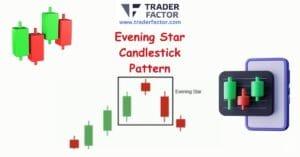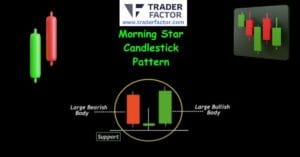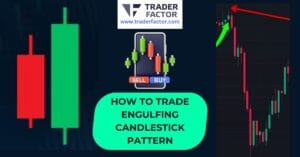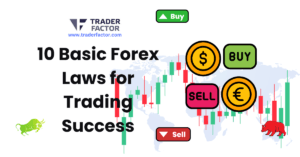Did you know nearly 90% of price action occurs between the Bollinger Bands? That’s a surprising statistic, isn’t it? These bands are a powerful tool that can provide unique insights into market volatility and potential price reversals. In the following sections, we will explore a range of strategies that harness the power of these bands. You might be intrigued to discover how to integrate these techniques to enhance your trading performance. Stick around, and you’ll find out.
Table of Contents
ToggleUnderstanding Bollinger Bands
To fully leverage the power of Bollinger Bands in your trading strategy, it’s crucial to understand their components and how they interact with market price movements. Bollinger Bands are a trio of lines: the middle line is a simple moving average, while the upper and lower bands represent volatility. They expand and contract, providing a visual representation of market volatility analysis.
In trend identification, Bollinger Bands widen during increased volatility and contract during less volatile times. This dynamic adjustment to market conditions makes them a useful tool for identifying potential price deviations. The price tends to revert to the mean, which is the middle band. This principle of mean reversion is central to many trading strategies.

Bollinger Bands are also great for signalling overbought conditions when prices touch the upper band. You might consider this an opportunity to sell. Conversely, when prices touch the lower band, the market may be oversold, and it’s potentially a good time to buy. Understanding these components and their interactions can enhance your trading strategy, helping you navigate market volatility with greater confidence.
Components of Bollinger Bands

Having grasped the basic understanding and application of Bollinger Bands, let’s now break down its components to comprehend better how they function in market analysis. Bollinger Bands are composed of three lines: the Simple Moving Average (SMA) and two standard deviation lines above and below the SMA.
The SMA is the average price over a certain number of periods, typically 20. It serves as the baseline for price movements and trend identification.
- The upper band is calculated by adding two standard deviations to the SMA. This band acts as a volatility indicator, expanding during volatile market conditions and contracting during quieter times.
- The lower band is the SMA minus two standard deviations. Just like the upper band, it adjusts to market volatility.

These bands fluctuate based on market conditions and price volatility, forming a channel where prices typically move. This fluctuation aids risk management by providing potential entry and exit points for trades. Remember, the wider the bands, the greater the volatility, and vice versa. Bollinger Bands, therefore, serve as a dynamic guide for understanding market trends and volatility.
Customizing Bollinger Band Settings
You can tailor your Bollinger Bands settings to better suit your trading style and market conditions. By making volatility adjustments, you can control the width of the bands. Increasing the standard deviation will widen the bands, capturing larger price deviations and reducing false signals. Conversely, decreasing the standard deviation tightens the bands, enabling you to detect smaller price changes.
Indicator customization is key. Experiment with the length of the moving average or consider using a weighted or exponential moving average. Fine-tuning these settings can help improve your signal interpretation, enhancing your trading performance.

Analyzing price deviations is crucial. When the price continually touches the upper band, the market may be overbought; when it touches the lower band, it may be oversold. Understanding these deviations can guide your trading decisions.
Bollinger Bands Trading Strategies

After fine-tuning your Bollinger Bands settings to suit your trading style, let’s explore some effective strategies that utilize this dynamic tool. These strategies revolve around key components such as trend identification, volatility analysis, pinpointing entry points and exit strategies, and managing risk effectively.
- Trend Identification: Bollinger Bands are perfect for detecting the direction of a trend. You can observe whether the price is moving towards the upper or lower band to identify bullish or bearish trends, respectively.
- Volatility Analysis: The width between the bands shows market volatility. A narrower band indicates low volatility, while a wider band signals high volatility. Use this to your advantage when planning your trades.
- Entry and Exit Points: Typically, traders buy when the price touches the lower band and sell when it touches the upper band. Remember, though, this isn’t a hard rule. Use other indicators for confirmation to increase your trade’s success rate.

Apply these strategies while always keeping risk management at the forefront. Consider setting stop-loss orders to limit potential losses. And remember, no strategy is foolproof. Always test and refine your approach to achieve the best results.
Optimizing Bollinger Band Usage
To optimize your use of Bollinger Bands, it’s crucial to understand how to adjust their settings and apply them effectively in different market conditions. With proper risk management, they can become a powerful tool in your trading arsenal.
First, consider the indicator combinations that work best for you, like pairing Bollinger Bands with MACD or RSI indicators. This can improve the accuracy of your trading signals and give you a more comprehensive view of market conditions.
Next, your time frame selection can significantly impact your strategy. Short-term traders might use a 15-minute chart, while swing traders prefer a daily or weekly chart. Adjust the settings to fit your trading style.
Additionally, understanding formula calculations is essential. The standard setting for Bollinger Bands is a 20-day simple moving average with a two-standard deviation. But you can tweak these parameters to suit your trading needs and risk tolerance.

Lastly, always ensure you’re using Bollinger Bands appropriately for the current market conditions. In a volatile market, the bands widen, and in a less volatile market, they narrow. Recognize these shifts and adjust your strategy accordingly. This optimal usage will help you harness the full potential of Bollinger Bands.
Frequently Asked Questions

Who Are the Best Forex Brokers?
Here are some trusted multiregulated forex brokers suitable for all styles of trading :
OneRoyal: Known for its social trading platform, OneRoyal offers many educational resources and a convenient demo account for practice.
IronFx: This broker provides a simple platform and a risk management tool, helping you better control your trading risks.
Admirals: Admirals stands out with exceptional customer support and a wide range of educational resources.
ActivTrades: Offers a user-friendly platform, extensive educational resources, and versatile demo accounts.
EightCap: EightCap wraps it up with an intuitive platform, top-notch educational materials, and an effective customer support team.

What Common Mistakes Traders Make When Using Bollinger Bands in Their Trading Strategies?
You’ll likely make mistakes with Bollinger Bands, such as overreliance issues, incorrect settings, misinterpreting volatility, timing mishaps, and false signal interpretation. It’s crucial to understand and correct these to improve your trading strategies.
How Are Bollinger Bands Different From Other Technical Indicators Like Moving Average Convergence Divergence (Macd) or Relative Strength Index (Rsi)?
Bollinger Bands differ from MACD or RSI because they provide bandwidth interpretation and visualize volatility. They’re often combined with other indicators for signal validation. Unique features include identifying band squeezes and walks, aiding trend predictions.
Are There Specific Market Conditions Where Bollinger Bands Are More Effective Than Other Times?
Yes, Bollinger Bands excel in volatile markets. They help you assess bandwidth, identify trends, and spot oversold or overbought scenarios. However, they’re less effective in flat or less volatile markets.
Can Bollinger Bands Be Used for both short-term and Long-Term Trading, and if So, how does the Strategy Differ?
Yes, you can use Bollinger Bands for both short—and long-term trading. Short-term adaptations might involve narrower band settings and period selection, while long-term adjustments could require wider bandwidth variations.

How Can a Trader Combine Bollinger Bands With Other Technical Indicators to Improve the Accuracy of Their Trading Signals?
Combining Bollinger Bands with other indicators can enhance your trading signals. Look for band contraction, expansion, divergence, and confluence. Also, pay attention to overbought/oversold indications to optimize your trades.
Conclusion
So, there you have it! You’ve now got the lowdown on using Bollinger Bands in your trading strategy. They’re a brilliant tool for highlighting market volatility and identifying optimal trading points. Remember, you can always tweak them to suit your unique style. Keep practising and refining your strategy, and you’ll soon see the positive impact Bollinger Bands can have on your trading success. It’s your turn now, so take the reins and let Bollinger Bands guide you on your trading journey.
Disclaimer:
All information has been prepared by TraderFactor or partners. The information does not contain a record of TraderFactor or partner’s prices or an offer of or solicitation for a transaction in any financial instrument. No representation or warranty is given as to the accuracy or completeness of this information. Any material provided does not have regard to the specific investment objective and financial situation of any person who may read it. Past performance is not a reliable indicator of future performance.















